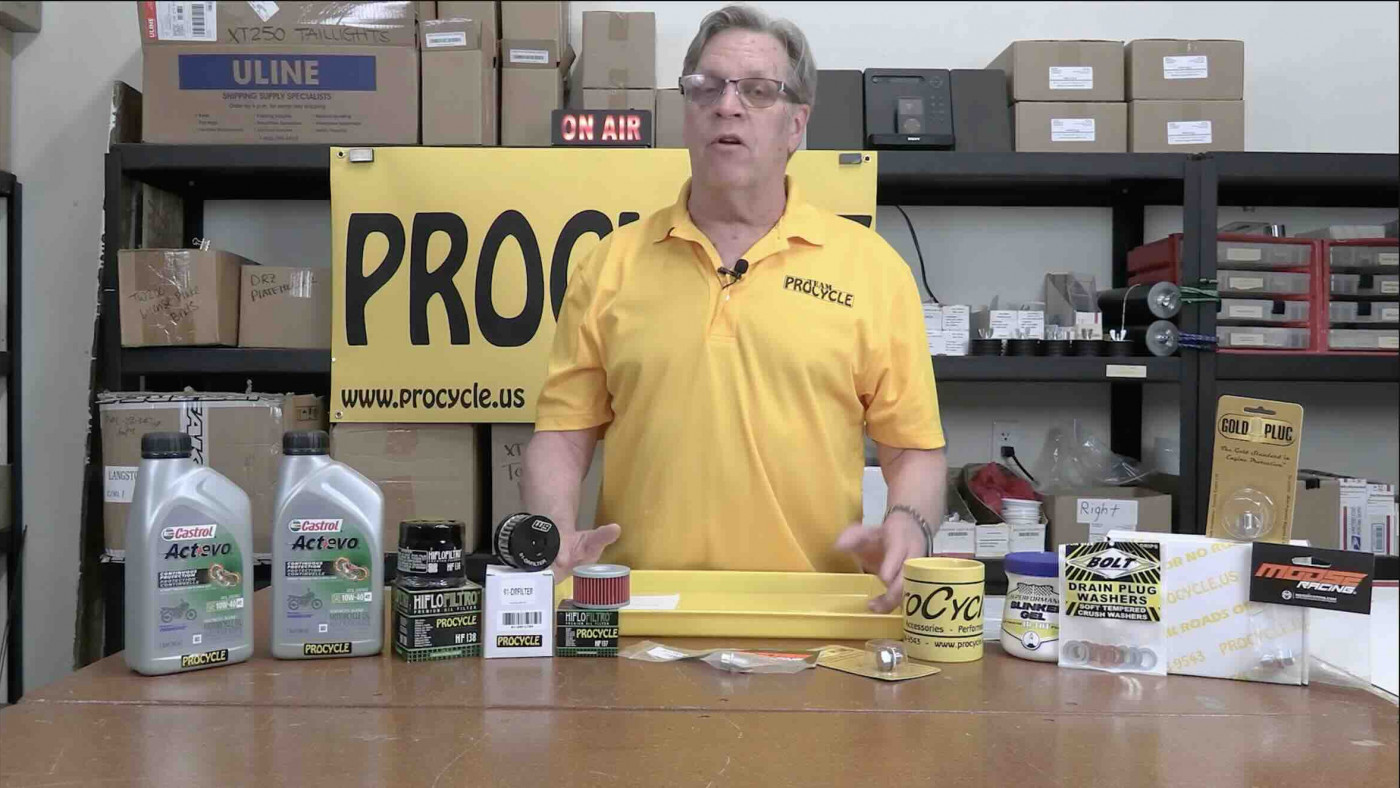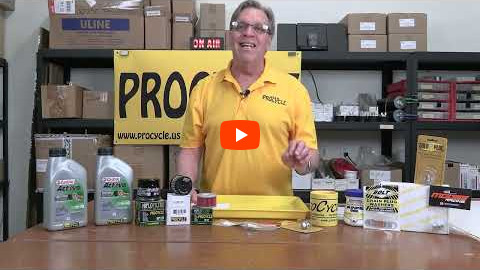In this month's tech talk, Carl discusses motor oil and oil filters for your dual-sport.
As a starting point, it's important to choose the right oil for your motorcycle. There are key differences between automotive grade motor oils and the oil required for the Japanese dual-sports that most of our customers ride. Most of these bikes require oils that are JASO (Japanese Automotive Standards Organization) certified to provide the proper friction components needed for their clutches. Look specifically for MA or MA2 ratings, which are designed for four-stroke motorcycles with wet clutches.
When selecting oil weight, pay attention to the numbers like 10W-30 or 10W-40. The first number (10W) indicates how the oil performs when it's cold. A lower number (lower viscosity) means easier startups. The second number (30 or 40) represents the how the oil performs at operating temperatures. A higher number (40 or 50 weight) means a heavier oil, which offers better engine protection. The downside to heavier oils is that they can slightly reduce performance as they're harder to pump. Follow your manufacturer's recommendations, which typically suggest 10W-30 for most of the bikes we see.
Next, installing a magnetic drain plug will help catch metal particles that shave off transmission gears and other moving parts. This simple upgrade will collect metal bits that would otherwise circulate through your engine, potentially causing wear on bearings, races, and other critical components. If your bike has a frame tube that holds oil, it's a good idea to install a magnetic drain plug there as well.
For oil filters, you have several options. Spin-on filters are convenient and can last 4,000-5,000 miles between changes when using high-quality oil. Paper filters work well for standard maintenance, while stainless steel filters provide better filtration but require more frequent attention. You'll want to change or clean stainless filters every 3,000 miles to prevent clogging from metal particles.
When installing a new oil filter, always replace the O-rings. These ensure proper sealing and maintain oil pressure. Without tight seals, oil can escape around the sides, reducing pressure and compromising filtration effectiveness. Also replace the filter cap O-rings each time you change your filter to ensure everything functions properly.
Following these recommendations will help extend your engine's life while maintaining optimal performance on your dual sport motorcycle. Be sure to check out our video for more details.
As always, if you have questions, don't hesitate to e-mail, call, or text us!

